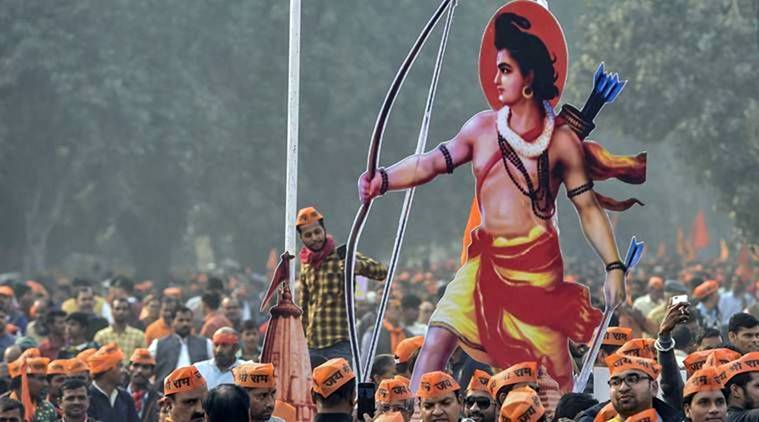
The Supreme Court on Tuesday said the 1991 report drawn up by four historians, rejecting claims that the site where the Babri Masjid stood was the birthplace of Ram, was at best an “opinion” and “cannot be” accepted as “evidence” to decide the Ayodhya case.
“At the highest, it would be an opinion,” Justice D Y Chandrachud, who is part of the five-judge Constitution Bench hearing the case, told senior advocate Rajeev Dhavan, who is representing the Sunni Central Wakf Board.
The remarks came as Dhavan drew the court’s attention to the report — Ramjanmabhumi-Babari Masjid, A Historians’ Report to the Nation, authored by R S Sharma, M Athar Ali, D N Jha and Suraj Bhan —- and said that the Allahabad High Court did not consider the report while deciding the case, “probably because D N Jha had not signed it”.
The CJI-headed bench is hearing appeals against the September 30, 2010 Allahabad HC verdict dividing the disputed 2.77 acres equally among the Sunni Waqf Board, Nirmohi Akhara, and Ramlalla.
“Who asked them to (prepare the report)? Were they commissioned by the government,” Justice Bobde asked Dhavan.
Senior counsel Zafaryab Jilani, also appearing for the mosque side, replied that “they had participated in a discussion” and “volunteered” to prepare it.
Countering the bench’s remarks that it was an “opinion”, Dhavan said, “It’s certainly not a view. It’s expert history.” He then stated the credentials of the historians and cited contents of the report, but the bench did not seem impressed.
Justice Chandrachud said, “This was in response to Vishwa Hindu Parishad’s (VHP) stand during talks…. Just like what VHP says can’t be evidence before us, this also can’t be.”
Dhavan denied that it was a reply to the VHP, but the bench pointed out that the report made it clear.
Justice Chandrachud said, “It would have been different if the historians had responded to the evidence cited by the Archeological Survey of India (ASI)” which excavated the site on HC’s orders. But there were many developments after that, including the ASI report, he added.
Justice Chandrachud stated that HC had dealt with the historians’ methodology and called it “very perfunctory”.
The bench also quizzed the Board on motifs found in Babri Masjid, as revealed in photographs taken in 1950.
Referring to a photograph of what is known as the ‘simha dwar’, which showed a bird between two lion heads, Justice Bobde asked, “What is that? Is it Garud?”, and added he was asking this because senior advocate C S Vaidyanathan, appearing for the deity Ramlalla, has “stated that it is Garud”.
Dhavan replied that whatever it may be, it proved nothing since some Muslim witnesses had said it was an emblem of the Nawab, and Hindu witnesses said it belonged to a temple.
Justice Bobde said the court was trying to co-relate it to the arguments that a mosque cannot have such images.
Dhavan then cited photos of the ‘kasauti’ pillars found inside the mosque and said it was a “mystery” where the pillar had came from. “Some say it came from Sri Lanka, some say Nepal; some say from a mine, some say it was lying there,” he submitted. He said the lotus motif found on them did not prove they belonged to a temple.
Dhavan said such images of flowers, etc, were part of Islamic art everywhere and there was “no direct evidence of the image of God on them”.
Justice Bobde then sought to know whether there was any evidence of such images being found in other mosques.
“No”, replied Dhavan, “we were not asked to produce such evidence.” As far as Muslims were concerned, they were praying at the western wall and that did not have any images, he submitted.
The Board also sought to contradict the Shia Wakf Board’s claim that it was willing to hand over the land for building a Ram temple and said that their stand in a written statement before the HC was that the land must go to Muslims whenever it is released.